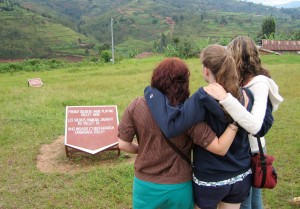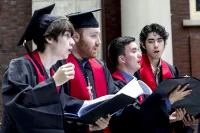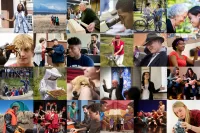
20 years after it began, three perspectives on the genocide in Rwanda

Bates students visit the Murambi Genocide Memorial site in 2009 as part of Alex Dauge-Roth’s Short Term course “Learning with Orphans of the Rwandan Genocide.” More than 50,000 people were massacred at the site.
Twenty years ago, the genocide in Rwanda began; 100 days later, “the country was a field of ruins and chaos: No institutions had been spared,” says Alexandre Dauge-Roth, professor of French and Francophone studies.
Three stories offer perspectives on the genocide:
- Dauge-Roth, an expert in the literary, cinematic and testimonial representations of the genocide, answers six questions about the events of 1994 and what is at stake for Rwanda moving forward.
- Aliza Luft ’06, a Ph.D. candidate at the University of Wisconsin, examines the question of “risky defections” during Rwanda’s genocide during the otherwise brutal Rwandan genocide in 1994.
- Bates seniors Devin Tatro and Simone Schriger explain their project in Rwanda this summer to serve children of incarcerated Rwandans, including those jailed for crimes during the genocide.
Categories BatesNews




